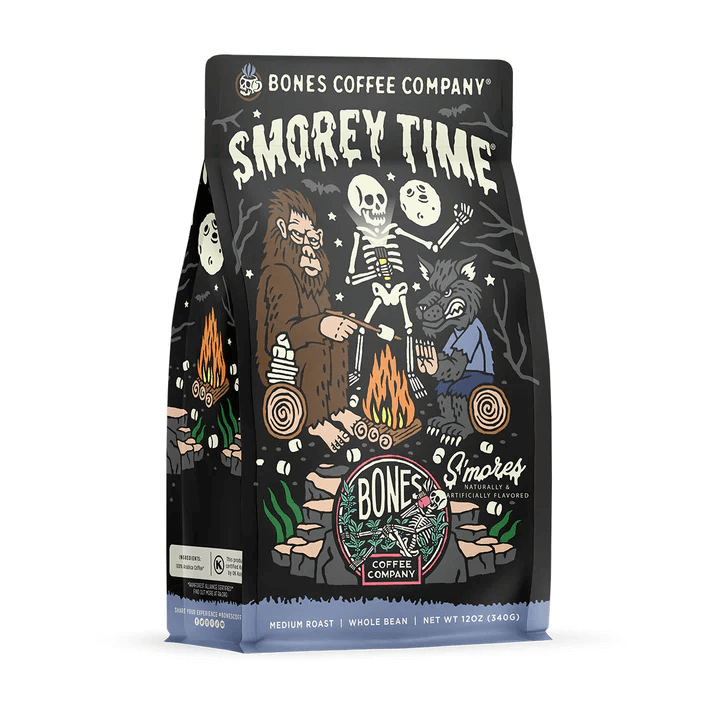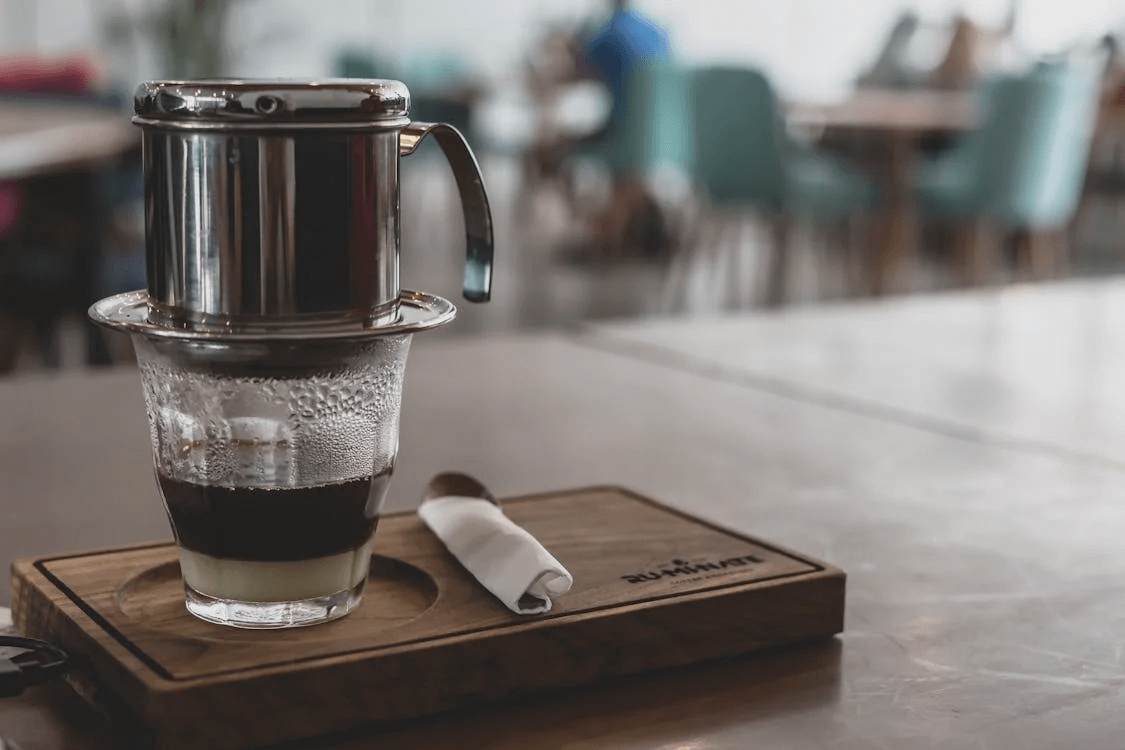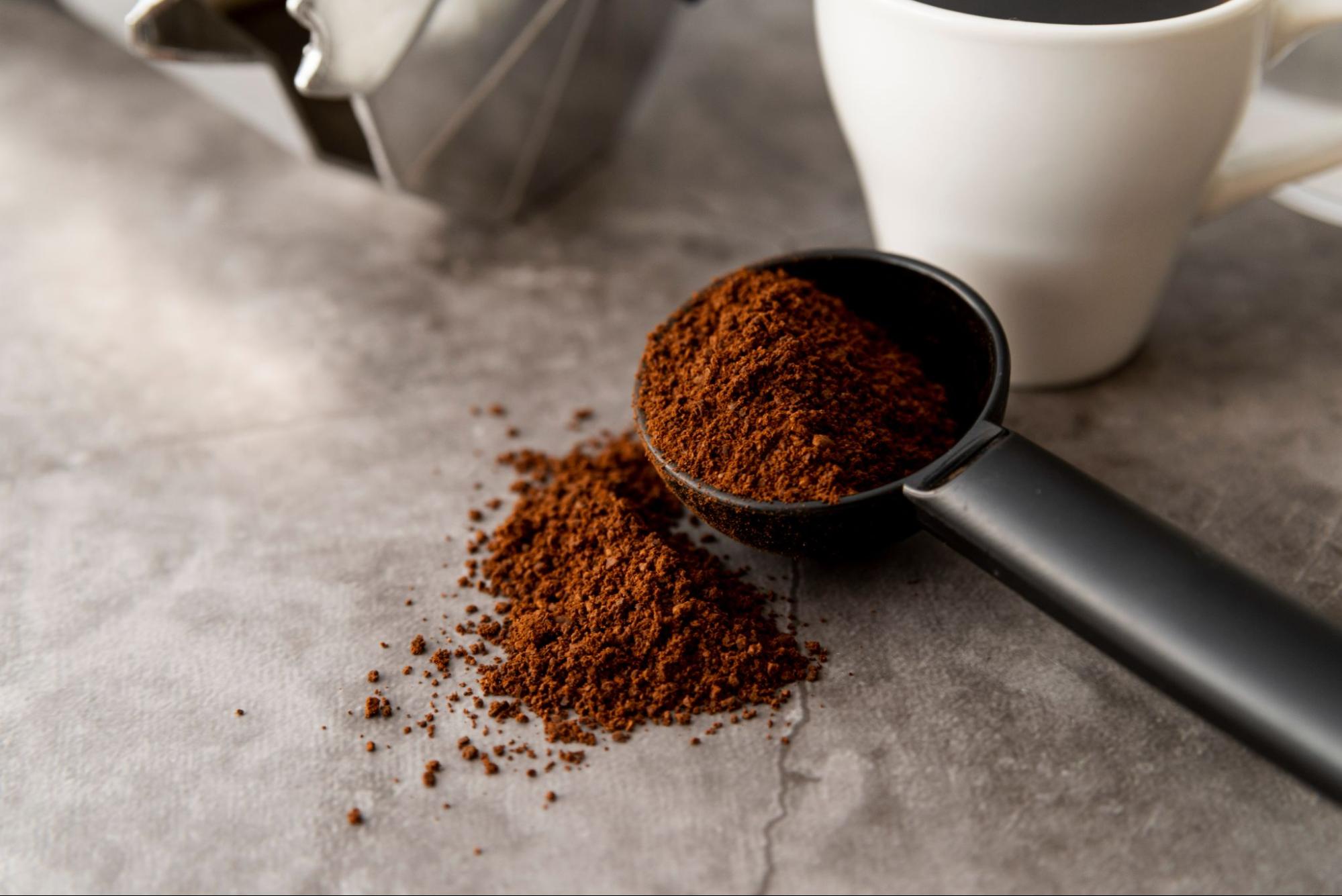Vietnamese coffee is more than just a beverage—it’s a cultural experience. Known for its bold flavor and unique brewing method using a phin filter, Vietnamese coffee captures the essence of Vietnam’s coffee-growing heritage. Whether paired with sweetened condensed milk for a creamy touch or brewed strong and dark, it offers coffee lovers a sensory delight.
For those who choose to drink Vietnamese coffee, it’s not just about flavor but also about immersing in tradition. This guide explores the origins, preparation methods, and diverse variations of Vietnamese coffee, like the refreshing Cà Phê Sữa Đá and the rich Cà Phê Trứng, offering enthusiasts everything they need to craft an authentic Vietnamese coffee experience at home.
What is Vietnamese Coffee?
Vietnamese coffee is a distinctive style of coffee preparation that originates from Vietnam, a country renowned for its rich coffee culture and significant contributions to the coffee industry as one of the largest coffee producers in the world.
This coffee is typically characterized by its strong, robust flavor, which is achieved through the use of dark roast coffee beans, often of the Robusta variety. Known for its high caffeine content and bold taste, Vietnamese coffee stands apart from the milder Arabica beans commonly used elsewhere.
Many coffee enthusiasts savor the opportunity to drink Vietnamese coffee in two popular variations: Cà Phê Sữa Đá and Cà Phê Trứng.
Cà Phê Sữa Đá, also known as Cafe Sua Da or Vietnamese iced coffee, combines brewed coffee with sweetened condensed milk and is served over ice, creating a refreshing and sweet beverage.
Cà Phê Trứng, or egg coffee, is a specialty drink that incorporates a frothy mixture of egg yolks, sugar, and condensed milk, resulting in a rich and creamy texture that’s unique to Vietnam’s coffee tradition.
Fun Fact: While Vietnam does cultivate Arabica coffee, Robusta dominates as the primary coffee variety, making up 97% of the country's production. |
What Type of Coffee Beans Should You Use?
When selecting coffee beans for Vietnamese coffee, it is advisable to choose beans that are medium to dark roasted. This roasting level enhances the robusta beans’ natural flavors and complements the brewing process, which often involves the use of sweetened condensed milk.
The combination of the beans’ inherent bitterness and the sweetness of the condensed milk creates a balanced and rich taste.
While robusta beans are traditional, some variations of Vietnamese coffee may incorporate arabica beans or a blend of both arabica and robusta.
Arabica beans offer a milder, more nuanced flavor profile with notes of fruit and acidity, which can add complexity to the coffee.
Elevate your Vietnamese coffee experience with the distinctive flavors of Bones Coffee.
Top 3 Customer-Recommended Medium Roasts | ||
Highland Grog | Salty Siren | S'morey Time |
 |  |  |
|
|
|
What is a Phin Filter, and How Does it Work?
A phin filter is a traditional metal filter essential for making Vietnamese coffee. This small, simple device, typically made of stainless steel or aluminum, consists of four main components: the brewing chamber, a perforated filter press, a lid, and a base or cup plate.
The Vietnamese coffee filter is designed to rest atop a cup or glass, allowing the coffee to drip slowly and directly into the serving vessel.
This brewing process is unique due to its slow drip technique, which extracts a rich and robust flavor from the coffee beans, creating the bold and delicious taste that Vietnamese coffee is known for.
Did You Know? Vietnam holds the title of the world's largest Robusta coffee producer, with an impressive average yield of over 2.3 metric tons per hectare. |
What is the Brewing Process Step-by-Step?
To brew Vietnamese coffee using a phin filter, start by gathering the essentials: a phin filter, ground coffee, hot water, and a cup or glass.
For an authentic Vietnamese coffee recipe, precision is key to achieving the rich, bold flavor this method is known for.
Unlike modern coffee makers, the process requires several careful steps to ensure the coffee is brewed correctly and reaches the desired flavor profile.
The unique brewing method highlights the drip coffee process that makes Vietnamese coffee so distinct and flavorful.
Step 1: Prepare the Phin Filter
Start by placing the phin filter on top of your cup or glass. Add approximately 2 tablespoons (about 14-16 grams) of medium-coarse ground coffee into the filter chamber.
Gently shake the filter to level the coffee grounds, ensuring an even distribution.
Step 2: Pre-Infusion
Place the gravity press or filter press over the coffee grounds.
Slowly pour over a small amount of boiling water (about 1-2 tablespoons) onto the grounds to allow them to bloom.
This pre-infusion step helps release carbon dioxide and enhances the extraction process, much like other manual brewing methods.
Let it sit for about 30 seconds before continuing.
Step 3: Brewing
After the pre-infusion, fill the phin filter with boiling water, approximately 195-202°F, until it reaches the top of the filter chamber. Place the lid on the phin filter to retain heat. The coffee should begin to drip slowly into the cup below.
The dripping process should take about 4-5 minutes. If the coffee drips too quickly, it may indicate that the grind is too coarse or the press is not tight enough. Conversely, if it drips too slowly, the grind may be too fine or the press too tight.
Step 4: Adjustments
Monitor the drip rate and make necessary adjustments to the press or grind size to achieve the optimal extraction time.
A medium grind is typically ideal for achieving a steady drip that fully extracts the rich flavors from the ground coffee. If the drip is too fast, consider using a finer grind to slow the process and enhance the extraction.
Step 5: Completion
Once the dripping has stopped, remove the phin filter from the cup. Stir the coffee to ensure an even consistency, especially if any sweetened condensed milk or sugar is added.
The resulting brew should be strong, rich, and aromatic, characteristic of traditional Vietnamese coffee.
How Do You Add Condensed Milk?
When you make Vietnamese coffee, the addition of condensed milk is a crucial step that contributes to its distinctive flavor profile.
Condensed milk, a thick, sweetened milk product, is used to balance the robust and often intense flavor of the coffee, providing a creamy texture and a sweet contrast.
The amount of sweetened condensed milk added can vary based on personal preference but typically ranges from one to three tablespoons per serving. This allows for the customization of sweetness levels to suit individual tastes.
The process of incorporating condensed milk into Vietnamese coffee involves adding it directly to the brewed coffee.
It is generally recommended to add the condensed milk before the coffee is poured over ice, ensuring that it mixes thoroughly with the hot coffee, which aids in dissolving the milk and achieving a uniform consistency.
Stirring the mixture well is essential to ensure that the condensed milk is evenly distributed throughout the coffee.
While traditional Vietnamese iced coffee uses sweetened condensed milk, some variations may include the use of unsweetened condensed milk or other milk alternatives, though these substitutions may alter the traditional taste and texture.
It is important to note that the use of condensed milk is a defining characteristic of Vietnamese iced coffee, distinguishing it from other iced coffee preparations that may use regular milk or cream.
Interesting Fact: Sweetened condensed milk became a staple in Vietnamese coffee because fresh milk was hard to find during the French colonial era. |
How Do You Serve It Over Ice?
To serve iced Vietnamese coffee, or Cà Phê Sữa Đá, over ice, it is important to consider the type of ice used, the method of preparation, and the timing to ensure the beverage maintains its rich flavor without becoming overly diluted.
The choice of ice can significantly impact the overall experience of the drink. Large ice cubes are preferable as they melt more slowly than smaller ones, helping to preserve the coffee’s strength and flavor over time.
When preparing Vietnamese iced coffee, it is advisable to brew the coffee slightly stronger than usual. This compensates for the dilution that occurs when the hot coffee comes into contact with the ice.
The coffee should be brewed directly over a glass filled with ice, allowing the hot liquid to cool rapidly and lock in the flavors.
To prevent excessive dilution, it is recommended to use a higher coffee-to-water ratio during the brewing process. This ensures that the coffee remains robust even as the ice melts.
Additionally, serving the coffee immediately after brewing and pouring it over ice helps maintain the desired temperature and flavor profile.
Fun Fact: A few years back, Vietnam established December 10 as its official National Coffee Day. |
Master the Art of Vietnamese Coffee
Crafting the perfect cup of Vietnamese coffee requires attention to detail, from bean selection to mastering the phin filter brew. If you're wondering how to make Vietnamese coffee, this article has guided you through every step—from choosing the best roast to incorporating the iconic condensed milk for added richness.
Whether you prefer it hot, iced, or with a creamy twist, Vietnamese coffee is the ultimate way to enhance your morning routine with bold flavors and unmatched versatility.
To elevate your coffee experience further, explore Bones Coffee’s premium medium-ground options. Discover unique flavors that add a modern twist to your Vietnamese coffee. Try them today!






